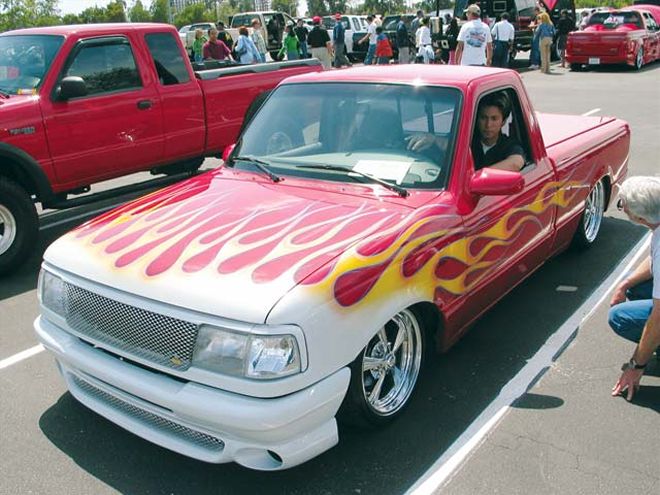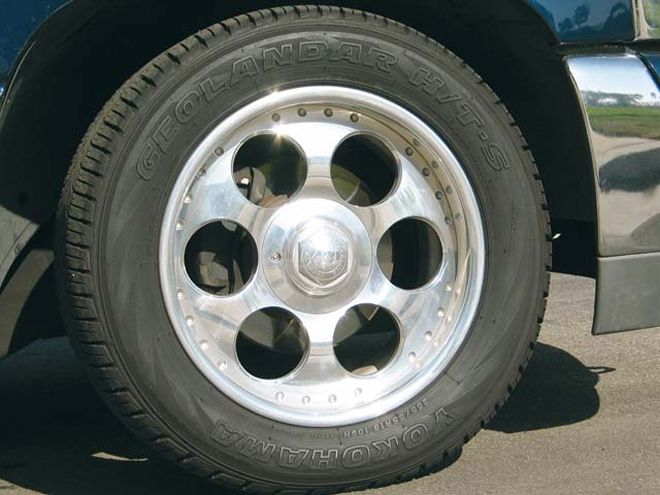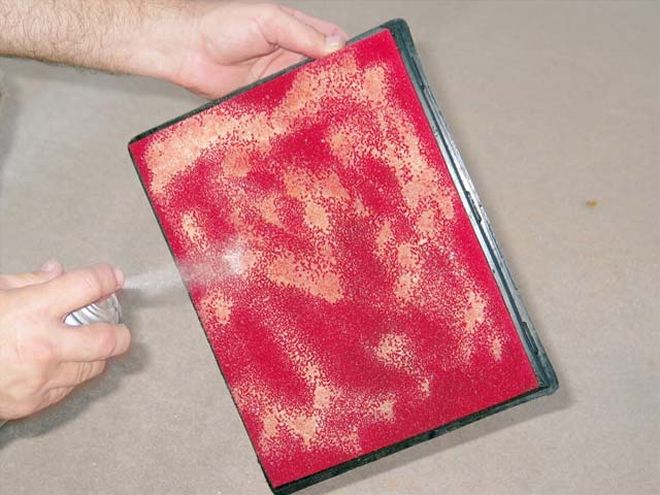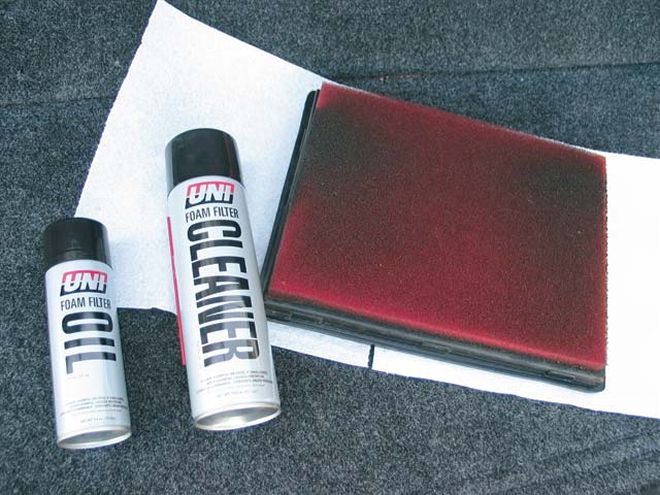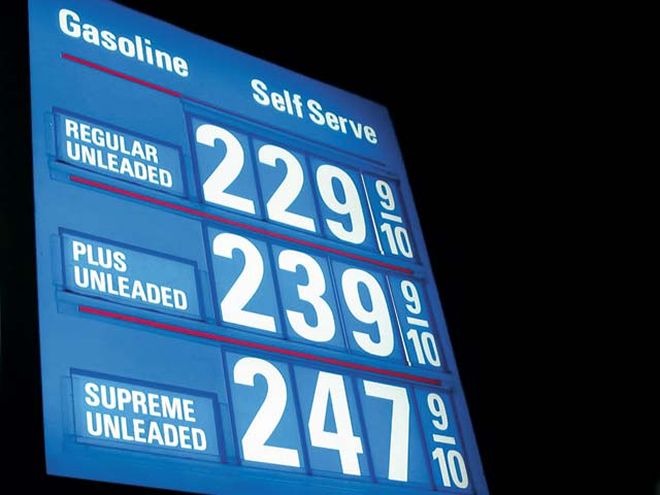
| increase Fuel Mileage gas Price Sign
Do a Google search of how to improve mileage and you get a ton of hits of pages hawking the latest scientific miracle breakthrough, which has been suppressed by Evil Incorporated. Most of them are-how to say it?-scams based on junk science. Some are loosely based on sound science, but offer no measurable increase in fuel efficiency. Then you get into the real actionable intelligence, which we'll go into detail here.
We'll start with the aspect of the fuel consumption that you have the most control of, or at least should: your behavior as a driver. After that, we'll address the state of repair and tune of your ride and how they impact mileage.
Where Your Ride Burns its Fuel and What You Can Do About It According to the Society of Automotive Engineers (SAE), the energy consumed by a vehicle when driven falls in three basic categories: 1. work due to (aero) drag; 2. work due to rolling resistance; and 3. work due to acceleration. The EPA estimates that in a typical drive cycle, your vehicle uses energy in the following manner:
- Stop-'n'-go city driving: 60% of your fuel is used to accelerate, 23% is used to overcome rolling resistance, and 17% is used to overcome aerodynamic drag.
- Highway driving: 43% of your fuel is used to push through the air, 30% overcomes rolling resistance, and 28% is used to accelerate.
- Combined city/highway driving: 45% goes to acceleration, 29% to overcome aero drag, and 26% to overcome rolling resistance.
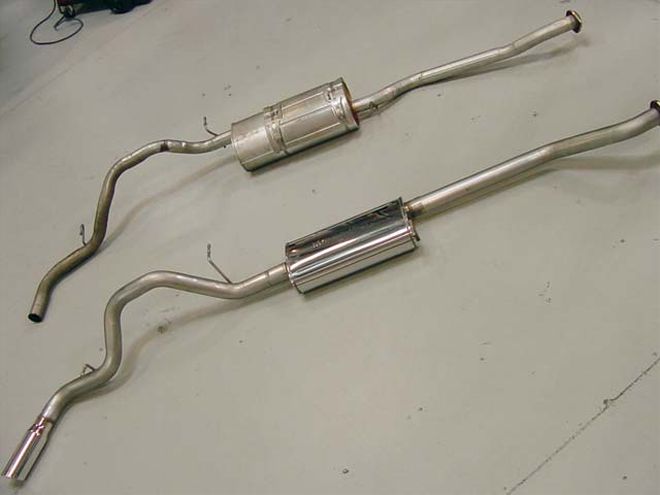
| A free-flowing exhaust system is one of the more effective mileage-enhancing mods you can install on your Mini truck. For gasoline-fueled engines, reducing pumping losses on the exhaust side helps efficiency at all throttle openings and rpm.
What this means is, first of all, you're screwed in stop-'n'-go traffic. You burn a lot of fuel accelerating your truck just to slow it down and stop. And when you're stopped and idling, you get zero miles per gallon. About the only thing you can do is to try to accelerate smoothly, find a pace that will allow you to flow with traffic, and all with the least amount of stops.
In highway driving, you have more control. And the factor that has the greatest influence on energy consumption on the highway is speed. This is because most of your fuel is used pushing your truck through the air. And check this out: The fuel required increases at the cube of the speed. Want an example? Here's how the EPA breaks it out at 40 mph and at 55 mph:
- 40 mph: 48% of fuel consumed by aero drag; 52% by acceleration
- 55 mph: 64% of fuel consumed by aero drag; 36% by acceleration
What this means is you have to slow down in order to improve fuel mileage, assuming all other things remain equal. At 40 mph you're using more fuel to accelerate to speed than you are overcoming aero drag. At 55 mph, you're using more fuel to overcome the drag. And aero drag increases at the cube of the speed. So, if you're traveling 55 mph and you speed up to 70 mph to change lanes, your fuel mileage really takes a hit compared with if you slowed down to allow the other vehicles to go by to change lanes.
To recap, you need to drive smoothly and try to pace the traffic in stop-'n'-go city driving, and keep top speed and accelerations to move through traffic at a minimum if you want to travel farther on less gas. Of course, we realize that sometimes we just have to feed the need for speed. We're not judging here; we're just trying to keep you informed of the cost involved.
Gas-Robbing Mechanical Repeat OffendersEven the best driving habits cannot overcome poor maintenance. The repeat offenders that steal most of your fuel are loose or missing gas caps, broken thermostats, worn plugs, defective engine management components, under-inflated tires, and incorrect alignment.
It's not something that's readily apparent to most, but if your gas cap is loose, you'd be surprised at how much that's costing you. According to the Sept. '00 issue of Service Tech magazine, an estimated 17 percent of vehicles on U.S. highways have either incorrectly installed or missing gas caps, allowing approximately 147,000,000 gallons of gas per year to vaporize into the atmosphere.
But that figure, as impressive as it seems, is peanuts compared to driving with low tire pressure and your truck's suspension out of alignment. These two factors raise rolling resistance way above normal levels and simply drain money away from your wallet. Each of these conditions can take a mile per gallon of your average without you even knowing it. A slight misalignment and slightly low inflation pressures can really hurt your rig's mileage.
A couple of other factors that degrade your mileage, not usually associated with fuel efficiency are engine oil and the transmission. Dirty oil produces more friction, which, in addition to wearing your engine faster, reduces fuel mileage. If your automatic transmission isn't functioning correctly, it may be slipping or shifting improperly; both cases are bad for fuel mileage. And don't forget the thermostat. If the thermostat malfunctions and causes the engine to run slightly cold, the engine management system feeds in more fuel to make it run properly, and that reduces mileage. And finally, an improperly tuned engine can rob you of a few miles per gallon.
Add it all up and you could be losing several miles per gallon in efficiency from neglecting routing maintenance items. So go clean the air filter, get the engine tuned up, check the gas cap, and make sure your tires are properly inflated and that the alignment is correct. And at these prices, you'll probably recoup the costs in less time than you think.
Gauging Mileage GainsIf you're really hard-core, you can maximize fuel economy by monitoring gauges. By fitting a gasoline engine vehicle with a manifold vacuum gauge and keeping the manifold vacuum as high as possible while driving, you'll maximize mileage. For diesel-powered vehicles, Banks Engineering says that fitting them with a pyrometer to measure exhaust gas temperature (EGT) allows you to minimize fuel consumption by driving so the EGTs are as low as possible.
The fuel economy estimates are based on results of tests required by the U.S. Environmental Protection Agency (EPA). These tests are used to certify that vehicles meet the federal-emissions and fuel-economy standards. Manufacturers test preproduction prototypes of the new vehicle models and submit the test results to EPA. EPA re-tests about 10 percent of vehicle models to confirm manufacturer's results. The vehicles are driven by a professional driver under controlled conditions, on an instrument similar to a treadmill. These procedures ensure that each vehicle is tested under identical conditions; therefore, the results can be compared with confidence.
There are two different fuel-economy estimates for each vehicle in the Fuel Economy Guide: one for city driving and one for highway driving. To generate these two estimates, separate tests are used to represent typical, everyday driving in a city and in a rural setting. Two kinds of engine starts are used: the cold start, which is similar to starting a car in the morning after it has been parked all night; and the hot start, similar to restarting a vehicle after being warmed up, driven, and stopped for a short time.
The test used to determine the city fuel-economy estimate simulates an 11-mile stop-and-go trip with an average speed of 20 mph. The trip takes 31 minutes and has 23 stops. About 18 percent of the time is spent idling, as in waiting at traffic lights or in rush-hour traffic. The maximum speed is 56 mph. The engine is initially started after being parked overnight. Vehicles are tested at 68 degrees F to 86 degrees F ambient temperatures.
The test to determine the highway fuel-economy estimate represents a mixture of non-city driving. Segments corresponding to different kinds of rural roads and interstate highways are included. The test simulates a 10-mile trip and averages 48 mph. The maximum speed is 60 mph. The test is run with the engine warmed up and has little idling time and no stops (except at the end of the test).
Note: To make the numbers in the Fuel Economy Guide more useful for consumers, EPA adjusts these laboratory test results to account for the difference between controlled laboratory conditions and actual driving on the road. The laboratory fuel-economy results are adjusted downward to arrive at the estimates in the Fuel Economy Guide and on labels seen on new cars, light trucks, and vans. The city estimate is lowered by 10 percent and the highway estimate by 22 percent from the laboratory test results. Experience has proven that these adjustments make the mileage estimates in the Fuel Economy Guide correspond more closely to actual, fuel-economy realized by the average driver.
To save gas and improve mileage, walk, bike, take a bus, or carpool whenever possible. Only use your car when necessary. Public transportation authorities often have carpooling information, as well as transit services. If you own more than one vehicle, drive the one that gets the best gas mileage whenever possible. Combine errands into one trip. Consolidate trips to destinations that are near one another. Once you arrive, park and walk between destinations. Save errands for one afternoon, then plan your trip so you don't retrace your route. Not only do you save gas this way, but you reduce wear and tear on your vehicle.
Drive your car wisely with proper maintainance. The way you drive and take care of your car can make a big difference in the gas mileage. You can greatly improve your mileage by having your car serviced regularly and by driving wisely. Any of these eight points can help to improve your mileage:
- Go easy on the brakes and gas pedal. Avoid "jackrabbit" starts by accelerating gradually whenever possible. Also, anticipate stops to avoid sudden braking.
- Avoid long idles. Turn off the engine if you anticipate a lengthy wait. Instead of idling at a drive-up window, park the car and go in. Idling burns more gas than restarting the engine.
- Limit car warm-ups in the winter.
- Avoid carrying unneeded items in the bed. Extra weight decreases gas mileage. Also, reduce drag by placing items inside the cab or bed, rather than on roof racks.
- Avoid high speeds. You can improve your gas mileage about 15 percent by driving at 55 mph rather than 65 mph.
- Use your air conditioning only when necessary. Roll down the windows or open the air vents to keep your car comfortable on not-so-hot days.
- Use Overdrive. If your car is equipped with Overdrive gearing (on five-speed manual transmissions and four-speed automatic transmissions), be sure to make use of the Overdrive gear as soon as your speed is high enough.
- If you have a manual transmission, the lower the shift speed, the better the fuel economy. Your owner's manual will give you further information.
For more information: The Office of Mobile Sources is the national center for research and policy on air pollution from highway and off-highway motor vehicles and equipment. You can write the center at the EPA National Vehicle and Fuel Emissions Laboratory, 2565 Plymouth Rd., Ann Arbor, MI 48105, or call (313) 668-4333.
-
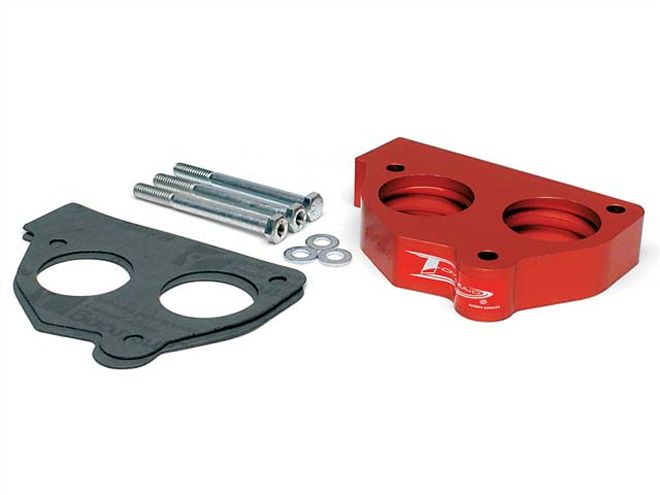
-
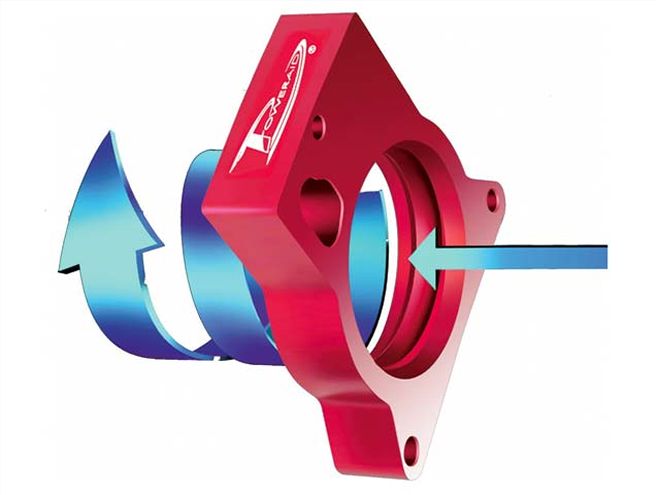
According to the tech wizards at Gale Banks Engineering, if you increase the airflow capacity of an engine, you must always add additional fuel, therefore mileage will suffer. During normal light-load, part-throttle driving, this is not the case at all. Increasing the airflow capacity means an engine doesn't have to work as hard to overcome pumping losses. In other words, power that was previously consumed by pumping losses will be available to do work after airflow enhancements have been made. Or, looking at this from the economy standpoint, the same amount of work can now be done while consuming less power (fuel). In effect, what really happens is that during normal driving, fuel consumption required to achieve equal acceleration or cruising speeds will be less than before the flow enhancements were made. And this is true for both gasoline and diesel engines.
The difference between gasoline-fueled engines and diesel-fueled engines is gasoline engines throttle the air to control power output and engine speed. This means that after airflow enhancements have been made, resulting in decreased pumping losses, a gasoline engine will be able to make the same power with less air throttle opening. The air throttle in a gasoline engine creates a pumping restriction during the intake cycle of the engine whenever the throttle is partially closed. Consequently, under part-throttle conditions, the majority of pumping-efficiency gains for gasoline engines comes from exhaust flow improvements. Improvements in the intake system with air cleaner capacity and cool-air induction help most at wide-open throttle, or nearly wide-open throttle. An unimpeded exhaust path helps at all throttle openings.
The experts at Banks Engineering point out that a diesel, in contrast, is "fuel-throttled," meaning its power output is regulated by how much fuel is injected. Therefore, all flow improvements in both the total intake and exhaust systems improve efficiency. Just as with gasoline engines, if pumping losses are reduced with flow enhancements, extra power is available to do work without extra fuel consumption.
Because it is improved airflow that increases engine efficiency, it should be noted that power "chips" that simply increase fuel delivery do nothing to improve fuel economy. The same can be said for bigger fuel injectors. Both power chips and bigger injectors simply add fuel to make power. They do nothing to reduce pumping losses or improve the efficiency of an engine. This is why the engineers at Banks approach engine mods by first improving airflow then adding fuel.
Vans, pickup trucks, and sport utility vehicles (SUVs) weighing more than 8,500 pounds gross vehicle weight are classified as heavy-duty vehicles. Fuel economy regulations do not apply to these vehicles, so the vehicles are not tested, and fuel economy labels are not posted in their windows.
 | increase Fuel Mileage gas Price Sign
Do a Google search of how to improve mileage and you get a ton of hits of pages hawking the latest scientific miracle breakthrough, which has been suppressed by Evil Incorporated. Most of them are-how to say it?-scams based on junk science. Some are loosely based on sound science, but offer no measurable increase in fuel efficiency. Then you get into the real actionable intelligence, which we'll go into detail here.
We'll start with the aspect of the fuel consumption that you have the most control of, or at least should: your behavior as a driver. After that, we'll address the state of repair and tune of your ride and how they impact mileage.
Where Your Ride Burns its Fuel and What You Can Do About It
| increase Fuel Mileage gas Price Sign
Do a Google search of how to improve mileage and you get a ton of hits of pages hawking the latest scientific miracle breakthrough, which has been suppressed by Evil Incorporated. Most of them are-how to say it?-scams based on junk science. Some are loosely based on sound science, but offer no measurable increase in fuel efficiency. Then you get into the real actionable intelligence, which we'll go into detail here.
We'll start with the aspect of the fuel consumption that you have the most control of, or at least should: your behavior as a driver. After that, we'll address the state of repair and tune of your ride and how they impact mileage.
Where Your Ride Burns its Fuel and What You Can Do About It  | A free-flowing exhaust system is one of the more effective mileage-enhancing mods you can install on your Mini truck. For gasoline-fueled engines, reducing pumping losses on the exhaust side helps efficiency at all throttle openings and rpm.
What this means is, first of all, you're screwed in stop-'n'-go traffic. You burn a lot of fuel accelerating your truck just to slow it down and stop. And when you're stopped and idling, you get zero miles per gallon. About the only thing you can do is to try to accelerate smoothly, find a pace that will allow you to flow with traffic, and all with the least amount of stops.
In highway driving, you have more control. And the factor that has the greatest influence on energy consumption on the highway is speed. This is because most of your fuel is used pushing your truck through the air. And check this out: The fuel required increases at the cube of the speed. Want an example? Here's how the EPA breaks it out at 40 mph and at 55 mph:
- 40 mph: 48% of fuel consumed by aero drag; 52% by acceleration
| A free-flowing exhaust system is one of the more effective mileage-enhancing mods you can install on your Mini truck. For gasoline-fueled engines, reducing pumping losses on the exhaust side helps efficiency at all throttle openings and rpm.
What this means is, first of all, you're screwed in stop-'n'-go traffic. You burn a lot of fuel accelerating your truck just to slow it down and stop. And when you're stopped and idling, you get zero miles per gallon. About the only thing you can do is to try to accelerate smoothly, find a pace that will allow you to flow with traffic, and all with the least amount of stops.
In highway driving, you have more control. And the factor that has the greatest influence on energy consumption on the highway is speed. This is because most of your fuel is used pushing your truck through the air. And check this out: The fuel required increases at the cube of the speed. Want an example? Here's how the EPA breaks it out at 40 mph and at 55 mph:
- 40 mph: 48% of fuel consumed by aero drag; 52% by acceleration